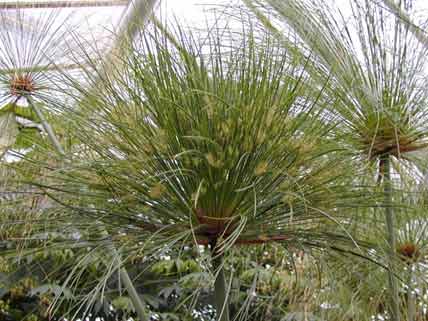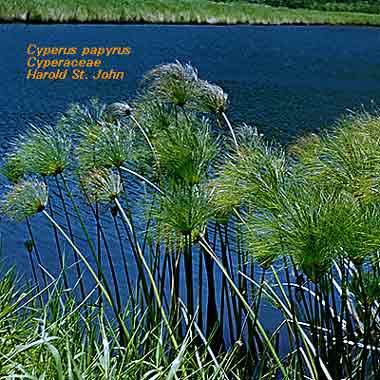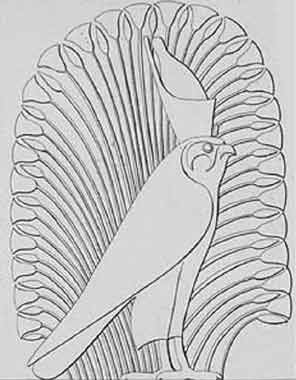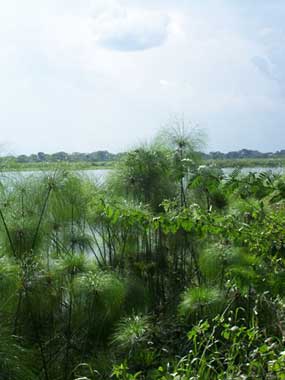|
Ancient
Egypt by Sjef Willockx |
||
|
Here is a close-up of the "mop-like head": © University of Cambridge The Egyptian artists did a good job, transforming this into their stylized representation.
In the hieroglyphic script, the words for papyrus and
green were identical (wAD). For us, this association of “green”
with “papyrus” is not so obvious, as we tend to associate the word
papyrus primarily with the writing material, and hence with its color of
a yellowish brown: the color of dried autumn leaves. The living plant
however has an intense green color. © University of Hawaii The Egyptians not only valued the papyrus plant to the point of revering it, but also the papyrus habitat par excellence: the papyrus marshes. Two cases should be mentioned in particular. The first is that of Hathor, emerging from a papyrus thicket. This is a frequently recurring theme in the Book of the Dead: in the vignette to Spell 186 (often the last spell of a manuscript), we see Hathor as a cow, descending from the mountainous desert, popping her head through the stems of a papyrus bush. This picture no doubt owed its popularity to its high content density: the desert being the goddess’s home as necropolis deity, while the papyrus thicket of the Delta was her natural habitat as a cow. The next photograph actually shows papyrus along the Nile - albeit more than 2,000 Km south of modern Egypt. Papyrus
in the wild, along the banks of the Nile in Uganda (Wikipedia). And even this is not a papyrus marsh. There may be none of those left in the world today.
Back to start Previous Next Thumbnails
|
|
|
|
|
All materials on this site are protected by copyright. All copyright by Sjef Willockx, unless otherwise indicated. |



